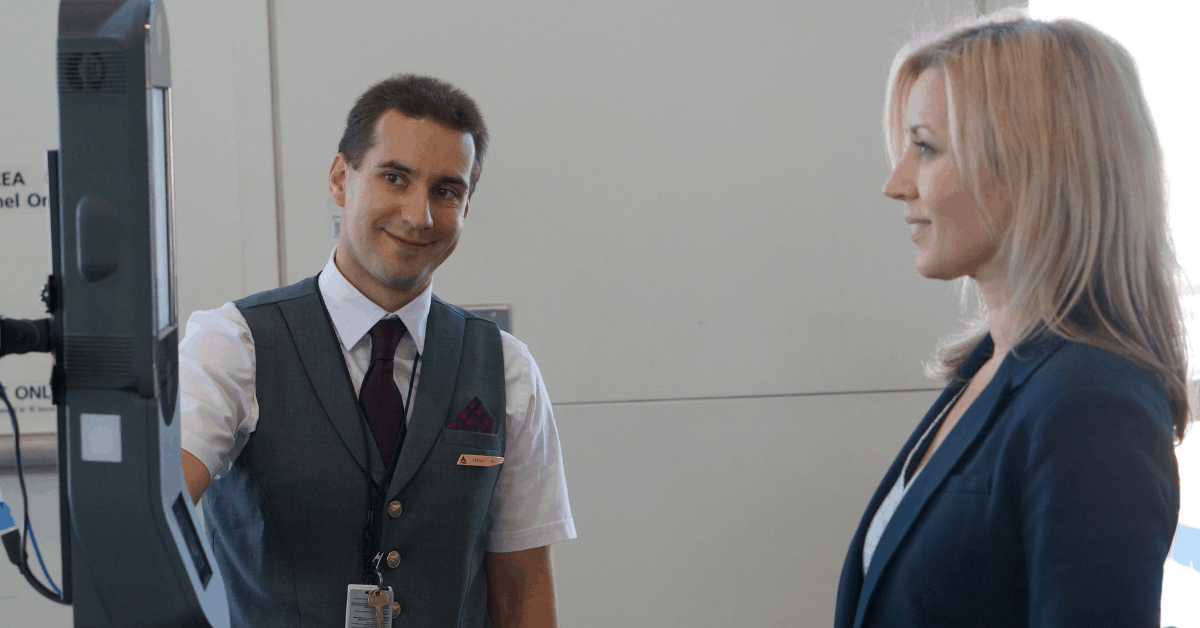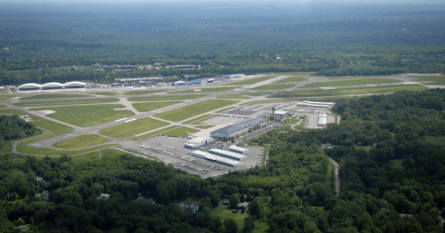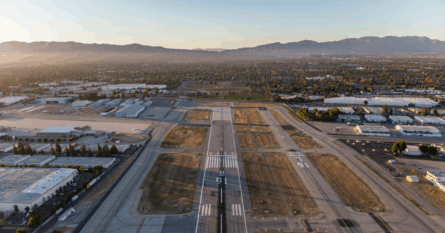From standing in a sci-fi-esque plastic tube to having your face scanned by a biometric robot, we explain the processes used by airports to keep us safe.

We all know that stringent security measures at airports are in place to keep us safe. But have you ever wondered how it all works?
Knowing airport security processes can help to make your travel experience more streamlined and efficient. With Blacklane chauffeurs available across the globe, you can book a Blacklane airport transfer to and from the airport to help make the rest of your trip stress-free.
Full-body scanners
If you haven’t yet had the pleasure of passing through a full-body scanner, then be prepared for a surreal experience. You’ll hear the whoosh-whoosh of the scanner as you stand inside the large plastic tube with your hands in the air.
Full-body scanners are used to detect threatening items and contraband such as weapons, explosives, and drugs under multiple layers of clothing. While there are a few different types of full-body scanners, the most common is the millimeter wave scanner. It uses a special type of electromagnetic wave to detect a wide range of items, from knives and guns to plastic explosives, and drugs strapped to travelers’ bodies. While the thought of electromagnetic waves passing through your body is a little unnerving, full-body scanners are considered perfectly safe and offer a more accurate and less invasive alternative to pat downs, or “frisks”.
Full body scanners are now commonplace in the U.S. and travelers passing through airports where they are in use will be subject to scanning unless they specifically opt out of the process by alerting a TSA agent. Those who opt out will be subject to a traditional pat down instead. While the scanners can process just two to three people per minute, a new type of rapid body scanner is currently being tested at Denver International Airport which takes less than a second.
Hand luggage liquid restrictions
Whether you’ve found yourself quickly downing a bottle of water before security, or having your hand cream scrutinized by airport staff, chances are you’ve had first-hand experience navigating the rules regarding liquids in your carry-on bag.
If you’re packing items into your hand luggage deemed liquid, cream, or gel, then they generally must be “travel size”, which means less than 100ml. Those items must be extracted from your luggage for the scanning process, and in some cases placed in a clear plastic ziplock bag, so security staff can see exactly what liquids, and in what amounts, you’re taking on board with you.

A new type of scanner is currently being tested at Heathrow Airport that will hopefully speed the process up. More sophisticated scanning technology would eliminate the need for travelers to remove liquids, as well as electronic items and laptops, from their bags during the security process.
Trace detection with swabbing
You’ve sent your hand luggage and carefully packaged liquids down the conveyor belt, and made your way through a metal detector or full-body scanner. You’re about to grab your bag when its pulled off the line by security. The airport official swabs the outside of your hand luggage liberally, before inserting the swab into a mysterious machine.
This process, known officially as explosive trace detection, is doing just that—checking to see if your luggage has come into contact with a bomb or explosive material. The technology checks the swab for trace amounts of explosives, which may indicate they’ve been in contact with, or were carrying, a restricted substance or item. While it’s generally luggage that is subject to swabbing, travelers clothes and hands may also be swabbed.
Swabbing is used as a secondary form of detecting explosives alongside full-body scanners. While the process can be a little intimidating, a positive swab test is no need to panic. Some of the chemicals they test for, such as glycerin and nitrates, are present in soaps shampoos and hair products, and often cause false positives.
Biometric identification
Identity checks are a routine feature of air travel, whether you’re checking-in, making your way through customs, or boarding your flight. While these checks are predominantly still performed by humans, biometric control gates, or “E-Gates” are becoming more widely used.

If you’re clearing customs via an E-Gate, you’ll be asked to insert your passport into a machine, which scans your face and runs an algorithm to confirm your identity. If the country you’re entering requires facial photographs and fingerprints, these are also captured as a part of the process.
While identity checks are perhaps the most stringently enforced airport security process today, this wasn’t always the case. In fact, if you were flying domestically in the U.S. during the 50s and 60s, ID checks weren’t performed at all. You simply turned up to the gate and presented your ticket—a little like bus or train travel today.
Identity checks for all U.S. domestic flights became mandatory from the 1990s and it’s here to stay. In fact, ID requirements for domestic flights in the U.S. are becoming even tougher, and as of 2020 travelers will be required to show Real ID-compliant forms of identification.
Detection dogs or ‘sniffer dogs’
When an adorable little beagle wanders up to your luggage, tail wagging and full of energy, it’s hard to resist the urge to give it a good ol’ scratch behind the ears. But the pooch is on a mission, so best to step back and let it do its job.
It’s widely thought that sniffer dogs stationed at airports are looking for one thing, and one thing only – drugs. While the occasional pooch is on the hunt for such illicit substances, they may also be searching for a host of other items, including explosives, live animals, animal manure, organic matter, ivory, currency, blood, and electronic contraband.
Sniffer dogs were first used in the 1940s by the U.S army, to detect German mines in North Africa, and by the 1970s were widely used to detect illegal substances on U.S. home soil. The canine’s acute sense of smell can find items and substances that may slip past other detection methods, making them an excellent additional security measure at airports.
And it seems there is no limit to what the canine nose can detect. The U.K. is currently researching the use of detection dogs to prevent the spread of malaria, while a spaniel at a Canadian hospital has been trained to sniff out superbugs.
The future of airport security
While the last few decades have seen ever-tightening airport security, the future of airport security is all about streamlining existing processes and shortening waiting times.
At a recent showcase in London, a number of promising technologies were demonstrated to industry experts. These included a pad which could detect explosives hidden in shoes while travelers were queueing, as well as a more advanced full-body scanner which would eliminate the need for passengers to remove their coats and empty their pockets.
With exciting new developments such as these, the future of air travel security is shaping up to be much more efficient, without having to sacrifice safety.




